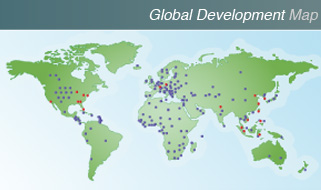-
Whither Now?
Posted: November 7, 2008
Many have you have been asking what effect the election might have on stem cell research, and of course by inference on Neuralstem. As Yogi Berra famously said, predictions are hard to make, especially when they concern the future. Nevertheless, now that we can see the outcome of the election, here is my take:
On the largest scale of course, things will get better. The past 8 years have been difficult at best under an increasingly stem cell unfriendly administration. There can be no question that the attitude at 1600 Pennsylvania Avenue will undergo a stark change for the better. This will most likely take the form of lifting some (but not all I suspect) of the restrictions on stem cell research imposed by the Bush Administration. Any impact of this change however, will come through Congressional action in the form of funding to be distributed through the NIH. Currently NIH funding is controlled by a Senate committee chaired by Senator Kennedy. It is possible that his health will force him to step down from the chairmanship of that committee, in which case Senator Harkin (Iowa) would likely take control of the committee. Senator Harkin is a stem cell supporter, and he is an NIH funding supporter. The budget for stem cell research under him would increase, perhaps dramatically. But I believe that his preferred “model” for funding this research, will be to distribute the money to various State research institutions, as opposed to simply “growing” NIH. This also would dovetail nicely with the general economic stimulus approach that I suspect the new Democratic Congress will take with most spending. Since Republicans and Democrats alike all have major research universities in their states, this increased spending, in this vehicle, should meet with little resistance.
The flip side of this increase in federal spending on stem cell research (in my opinion) will be the end of the movement towards State funded initiatives. The most famous of these is of course proposition 71 in California and it’s $300 million a year for ten years dedicated to stem cell research. The political impetus for this bill was undeniably a push back against the Federal ban on certain research. Into that gap at least 9 other states also passed (more moderate) initiatives. It seems to me that now the urgency, and most likely the political will that spawned this movement, is gone. We are entering a time when State governments are all looking at record deficits and are going to have to make hard spending choices. Any area where the Federal government is stepping in to make funding available seems an obvious target for State cuts. We are already seeing the likely outcome of this dynamic in two instructive states, California and Maryland.
In Maryland they passed a multi year initiative, but left the appropriation of the money (the funding) to the legislature on a year by year basis. Already talk out of the State Capitol is that the stem cell bill will not be funded in the next budget. In California, where the money pretty much “has” to be spent because of the technical nature of the legislation (it was actually a State Constitutional Amendment) they will find other ways around this issue. I notice that they announced recently that $250 million was awarded to build a new research center on the Stanford campus, with the goal of attracting researchers from all fields (like oncology and cardiology etc.) to study the intersection of stem cells and their fields. In other words, a basic research and infrastructure building program, probably nothing like the supporters of the movement that created prop 71 envisioned. This is a good example of how the future of stem cell research will be affected by the election and the world we now live in. States are in a scramble for money, and they will direct whatever money they have to basic economic stimulus.
Neuralstem of course does not use any State sponsored research grants. And to the extent that our important collaborators are all large state research universities (like Michigan, UC San Diego, and University of Florida) the new order will most likely be a net plus for us. But the Company is focused now on human trials for our spinal cord cells, not on basic research like the embryonic stem cell field. And we are looking to expand our clinical trial universe to Asia, in places like Taiwan and China in addition to the U.S. for both ALS and Spinal Cord injury. This is what will drive our own progress towards commercialization of our stem cell therapies, not the basic research environment.
As Yogi said, it’s tough to look ahead to far, and the law of unintended consequences has not been repealed. But on balance I think the future looks very promising for the field in general, and Neuralstem in particular as a result of what has taken place.






